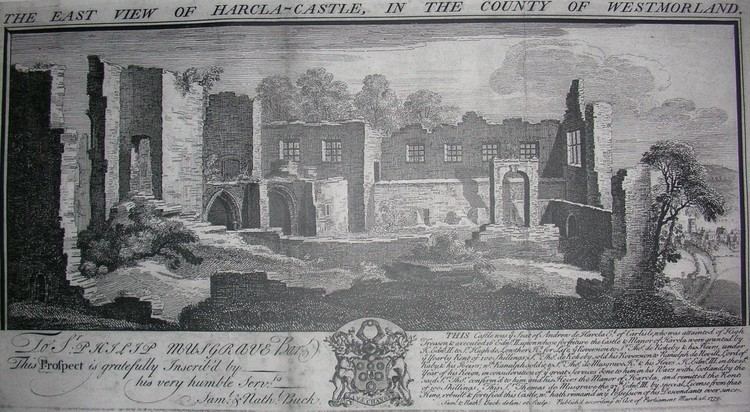Open tothe public No | Owner Private Materials Stone | |
 | ||
Condition Only earthworks and a vaulted cellar survive Similar Hayton Castle, St Stephen's Church - K, Pendragon Castle, Brough Castle, Dalton Castle | ||
History
The manor was confiscated circa 1315 from Roger de Clifford and granted to Andrew de Harcla (anglicized to Andrew de Harclay or Hartley). The name Harcla is thought to be from the Old English for "hard ground" and may refer to the outcrop of land that the castle is built upon in the Eden valley.
The existing manor house was fortified by de Harcla, some time prior to 1323, when he was ordered by King Edward II to be hanged, drawn and quartered for alleged collusion with Robert the Bruce, and forfeited his earldom and lands. It was granted to Ralph de Neville who later sold it through three other hands to Thomas de Musgrave who on the 4th of October 1353 was granted a licence to crenellate by King Edward III:
It was improved during the 17th century with the addition in 1615 of a pair of wings but was abandoned circa 1677. Thomas Machel visited the castle in 1677 and described it as
An Elizabethan building consisting of an inner quadrangle surrounded by buildings, and an outer court to the north protected by a thick and high curtain wall. The entrance to it was approached through a gateway at the head of a flight of steps from the road. Directly opposite an archway opened into the inner court; on the left, or east side, was the kitchen and buttery, with the hall beyond, entered by an external stair from the court; the south end was occupied by the chapel and withdrawing rooms; whilst on the western side there was a long gallery lighted by a large oriel window facing the quadrangle
Another sketch from 1692 shows a thick, high curtain wall enclosing a square outer court, with an inner court enclosed by three and four storey buildings. The image above shows what remained by the beginning of the 18th century. It was demolished between 1704 and 1744 for building stone which was used to repair Edenhall.
Today
Apart from limited earthworks all that remains now is a few metres of wall and stairs down to a vaulted cellar for the former kitchen. The site currently houses a late-18th-century farmhouse and outbuildings.
